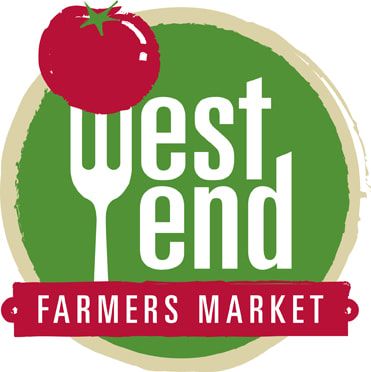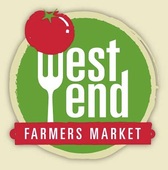|
According to a 2010 statistic, 68% of flowers sold within the U.S. are imported, primarily from Colombia. Of those flowers grown in the country, 76% are grown in California. So, whenever you dash into your local grocery to get a bouquet on one of the many occasions the floral industry assures you need flowers for, they most likely traveled over 2000 miles in their short lives. And, if you've seen Maria Full of Grace, you know it's likely they weren't grown or processed in the happiest conditions befitting your flower necessitating event.
The ecological trend which has emerged makes these facts well known and a group which has made this a big point in their lives are those in the midst of wedding planning. From growing their own to crafting them out of old maps, more and more creative couples are seeking earth-friendly alternatives for their wedding decor. As beautiful as they are, some of us aren't as skilled as others in paper folding technique or posess the requisite combination of discipline and determination to even try. Coming from someone who has never successfully folded a napkin let alone a crane, it's unrealistic to think that a couple just weeks away from the Big Day would see this as a viable option. So. What then? Hothouse flowers are by no means on the same level of "corporate evil" as blood diamonds but more environmentally sensitive folks might unwilling to be indifferent to the situation, especially when it's for something as significant as a wedding. Apart from traveling directly to the source, eager planners can come down to the market. Talk to our friendly flower people, Magali (whose tent resembles a florist's shop complete with hanging baskets and orchids) and Billie (who brings two truckloads of fresh, local wildflowers every weekend without fail). Their arrangements are stunning representations of our region's flora; beautiful both as a dining room centerpiece or sailing through the air towards the single ladies at your wedding. Take a bunch home this Sunday- we're sure you'll come back later when birthdays, Valentine's Days and other special days roll around. How Does a Farmers Market Affect the Community?
Tomorrow the Kojo Nambe radio show on WAMU will interview Sharon Gruber of Bread for the City. Bread for the City is a DC based food bank with cutting edge ideas on food and nutrition for low income recipients. They “Glean” fresh food from farmers and farmers markets to distribute as a healthy alternative to the processed foods most food banks rely on. Their website states “Bread for the City rescues tens of thousands of pounds of fresh, free surplus produce. Gleaning is an ancient practice of salvaging food that would otherwise go to waste in a food system.” They glean from farmers, farmers markets and trees in the DC area. It is a novel and creative method of procuring food for distribution to low income families. (1) Since Bread for the City provides a range of services including health care, it was important to them to support their health care initiative by providing fresh healthy foods for their customer base. Statistically it can be difficult to identify how the distribution of fresh food affects the habits of a community. Fortunately, in January 2008, The American Journal of Public Health published an article by four doctors who completed an in-depth, statistical analysis of the long term practices of low-income women who received assistance for the purchase of fresh local fruits and vegetables. This was a two month study conducted in Los Angeles, using scientific methodology which documented reactions of a control group to economic subsidies for fresh fruits and vegetables. These doctors wanted to know if access to fresh foods at a good price could change eating habits – and it did! Prior to this study, there were few quantitative studies on the effect on daily habits access to fresh foods might create. Kaiser Permanent did a small survey of patrons at their worksite farmers markets and discovered that nearly 3 of 4 shoppers reported that they consumed at least a few more fruits and veggies because of the market and more than half reported consuming an increased variety of fruits and veggies.(2) According to the American Journal for Public Health article, people with low incomes are at risk for poor dietary quality and for low consumption of fruits and vegetables. There are many factors that contribute, the chief among them being the lack of green grocers, supermarkets or farmers markets in low income neighborhoods, as well as the cost of fresh foods and veggies compared to the low cost of high sugar, high carbohydrate foods like potatoes, pasta, and rice. The doctors conducting the study provided two things to promote the choice of fresh vegetables and fruits: 1. economic subsidies for fresh fruits and veggies in the form of SNAP coupons, and 2. they made sure there was a farmers market and/or grocery store within walking distance of the SNAP offices. When you get into the middle of the article there are enough equations, percentages and statistics to give you a headache, so let me synthesize. Access to an economic subsidy for fresh fruits and veggies, as well as a site to purchase them in, resulted in a large increase in consumption of fruits and vegetables during the study and afterwards as well. “Farmers Market Participants showed an increase of 1.4 servings…” (complicated math – let’s just say it means people were eating fresh food at nearly every meal), while the “supermarket participants showed an increase of 0.8 servings.” “Participants redeemed more than 90% of the coupons and purchased a wide variety of fresh fruits and vegetables” Clearly people who frequented farmers markets were more likely to eat more fruits and veggies. This is probably because farmers markets are more fun than grocery stores. We don’t need a complicated scientific study to prove it, however this study states “farmers’ market participants thought produce at their site was fresher and of higher quality than at the supermarket”. Participants who purchased their produce at the farmers’ market also mentioned enjoying the pleasant “community experience” of meeting friends while shopping and interacting directly with growers. (3) Presently Bread for the City gleans at our market. We have a great relationship and love to see the truck drive up every week to haul off the goods. We support their efforts to promote healthy eating wholeheartedly. Our own efforts at promoting healthy eating are diverse: We have a wide range of foods at our market; we have had a Yoga class at the market and may offer more, we give away recipes, our operating non-profit Eden Good dedicated the summer to demonstrating how to can the fresh produce shown at our market, the Alexandria biking initiative has had a table at our market multiple Sundays, we will watch customers bikes for them if they bike to the market. Additionally, we are looking into adding the SNAP program, coupons for low income residents, to our market next season. If anyone reading this would like to assist with that research and planning, please contact us at [email protected]. Please listen to the Kojo Nambe Show this Wednesday at 1PM to hear Sharon Gruber, Bread for the City’s nutritionist, talk about their work. This Sunday - come and say hi and tell us your stories on how the market has affected your eating habits. I will add them to our blog. See you at the market! (1) Bread for the City Website. www.breadforthecity.org (2) Project for Public Spaces ”Public Markets and Community Health: An Examination” J. Robin Moon, Dr. M. Katherine Kraft, Dr. Lawrence Brown, Jarmin Yeh. (3) “Effect of a Targeted Subsidy on Intake of Fruits and Vegetables Among Low-Income Women in the Special Supplemental Nutrition Program for Women, Infants, and Children.” Denar R. Herman, Gail G. Harrison, Abdelmonem A. Affi, and Eloise Jenks. American Journal of Public Health. January 2008, Vol 98, No. 1. |
West End Farmers Market
|


 RSS Feed
RSS Feed
